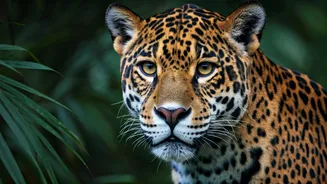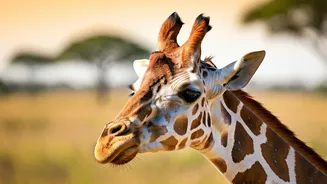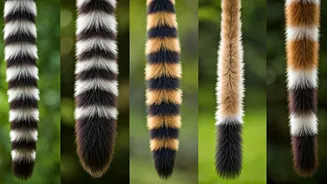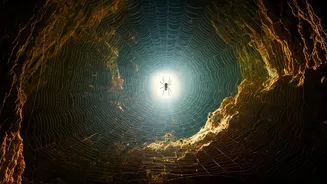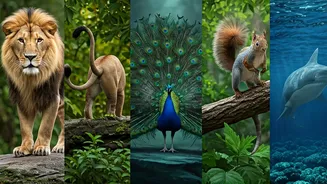Introduction: The Huntresses
The natural world is an arena where survival is the ultimate goal. In this arena, females often demonstrate remarkable hunting abilities. This article
unveils ten exceptional female hunters, each with unique strategies and adaptations. These predators, ranging in size and complexity, significantly influence their ecosystems. Their hunting prowess, adapted over countless generations, showcases the amazing diversity of life on Earth. From the tiniest insects to the biggest marine mammals, these female predators have evolved to be highly efficient in their methods.
Mosquitoes: Bloodthirsty Females
At the start of the list is the tiny but mighty mosquito. Only female mosquitoes bite, and they do so to obtain the protein needed to produce eggs. They use their specialized mouthparts to pierce the skin of their prey, extracting blood. Mosquitoes are responsible for transmitting diseases like malaria, dengue fever, and Zika virus. Their impact on human health and ecosystems is significant, making them a crucial subject of study for scientists and public health officials globally. These tiny predators influence the spread of disease, affecting the lives of millions worldwide.
Black Widow Spiders: Venomous Ambushers
Black widow spiders are recognized by their glossy black bodies and the red hourglass marking on their underside. These spiders are infamous for their potent venom, which they use to immobilize their prey. The female black widow is significantly larger than the male and is known to consume the male after mating, thus the name. They build complex webs to trap insects and other small creatures. Their venom is a neurotoxin that can cause severe pain, muscle cramps, and other symptoms. Black widows are an important part of their ecosystems, helping to control insect populations.
Portia Spiders: Clever Hunters
Portia spiders are known for their intelligent hunting tactics. These spiders are jumping spiders and display unique behaviors, including the ability to stalk and prey on other spiders. They can assess their prey, plan their approach, and even mimic the vibrations of other spiders' webs to lure them in. Portia spiders are found in various habitats and their hunting strategies reflect their adaptability. Their behavior is a source of fascination for scientists, shedding light on the cognitive capabilities of spiders. These spiders are expert hunters who navigate the complexities of their environment with remarkable precision.
Praying Mantises: Stealth Strikers
The praying mantis, with its distinctive posture and raptorial front legs, is an effective predator. The female mantis often exhibits cannibalistic behavior, consuming the male after mating. They ambush their prey, often insects, with lightning-fast strikes. Their camouflage allows them to blend in with their surroundings, making them difficult to detect. Praying mantises are found worldwide and play a key role in controlling insect populations. They are a visual example of nature’s predatory efficiency. These insects are fascinating to observe, showcasing the precision and adaptability of predatory behavior.
Mantis Shrimp: Punching Predators
Mantis shrimp are known for their powerful strikes, which they use to crush the shells of their prey. The females are typically brightly colored. They have specialized appendages that can deliver incredible force, making them one of the strongest animals pound-for-pound. Mantis shrimp inhabit the shallow waters of tropical and subtropical regions. They are a significant part of the marine food web. Scientists continue to study their unique hunting mechanisms and their ability to withstand the force of their punches. They are a true example of the power and diversity of the ocean's predators.
Orcas: Apex Ocean Hunters
Orcas, also known as killer whales, are apex predators in the ocean. The females lead the pods and play essential roles in their social structure. They are highly intelligent and work in coordinated groups to hunt various prey, including fish, seals, and even other whales. Orcas use various strategies, such as beaching themselves to capture seals or creating waves to dislodge prey. Their complex social structures and hunting techniques are a subject of ongoing research. These magnificent creatures are a symbol of the ocean's power and intelligence.
Spotted Hyenas: Social Hunters
Spotted hyenas are known for their complex social structures. Female hyenas are larger and more dominant than males. They live in matriarchal clans and cooperate in hunting large prey. Hyenas are opportunistic hunters and scavengers. They can consume nearly all parts of an animal. Their vocalizations, including their distinct laughter-like calls, are used for communication within the clan. They are a vital part of the African ecosystem, helping to control prey populations. Their intelligence and social coordination demonstrate the sophistication of their predatory behavior.
Tasmanian Devils: Scavengers & Hunters
Tasmanian devils are the world’s largest surviving carnivorous marsupials. Female Tasmanian devils are known to be fierce predators. They are primarily scavengers but also hunt small animals. They are known for their powerful jaws and aggressive behavior. The species is under threat from the Devil Facial Tumour Disease (DFTD). Efforts are underway to protect and conserve these unique creatures. The Tasmanian devil’s role in its ecosystem remains crucial. Their conservation is a significant focus of wildlife management in Tasmania.
Sloth Bears: Adaptable Foragers
Sloth bears, also known as labiated bears, are native to the Indian subcontinent. Although omnivorous, they primarily feed on insects, especially termites and ants. The females play a crucial role in rearing their young and protecting them from predators. They have long claws and a shaggy coat, which helps them dig for insects. They are adapted to their environment. Sloth bears play a vital role in their ecosystems, helping to control insect populations and disperse seeds. These fascinating bears showcase a unique combination of foraging and predatory skills.
